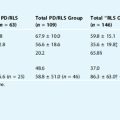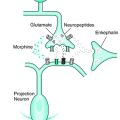Chapter 5 Restless Legs Syndrome and Nocturnal Myoclonus (Periodic Limb Movements During Sleep)
An Historical Review
In a lecture on the predormitum (or sleepening, as Gowers, cited in Critchley,1 liked to call it), Critchley1 mentioned a predormitum restlessness, which, he said, is by no means a rarity, although physicians may not be consulted specifically on this score. He acknowledged that Ekbom2–4 was responsible for drawing attention to the condition, calling it restless legs syndrome (RLS). Few medical men, Critchley added, knew that the Ekbom syndrome was graphically described in the 17th century by the great clinical neurologist Thomas Willis.5 Ekbom2–4 admitted that Willis had been the first to describe the disorder, but in 1685, not 1695 as Critchley had suggested. In fact, a description of the syndrome seems to date back to a text Willis wrote in 1683, which was in turn a translation from a paper written in Latin in 1672.6
In 1861, Wittmaack7 named the disorder “anxietas tibiarum,” misconstruing it as a particular form of hysteria. Beard8 also considered the condition to be a form of nervous exhaustion, but specified that it was “one of the myriad results of spinal irritation.” Oppenheim9 included the RLS among the forms of neurasthenia, pointing out that it may sometimes appear as a family trait.
Mussio-Fournier and Rawak10 in 1940 published a full report of a patient with an inherited familial form of RLS. They pointed out that the clinical symptoms worsened during pregnancy and then improved during the puerperium. Their patient also presented with acroparaesthesia and motor agitation associated with pruritis and urticaria.
Allison11—a sufferer himself—wrote, “This is a common ailment, which I have never seen described,” adding “I have observed this condition mainly in myself, relatives, and friends, as patients do not often complain of it unless it occurs frequently enough to cause loss of sleep.” Allison defined the motor disorder as “a combination of voluntary and involuntary jerks,” using the term “leg jitters.”
Without a doubt, Ekbom has the merit of having extensively illustrated the clinical aspects of the syndrome, dedicating an important series of publications to the subject between 1944 and 1960 and beyond.2–4
Bonduelle12 and Jolivet13 described the first French observations; Tuvo,14 the first Italian case; and Barraquer-Ferre,15 the Spanish patient. A major contribution was made by Nordlander,16 who documented that iron deficiency anemia exacerbated RLS and that intravenous administration of iron compounds “proved very effective, regardless of whether or not the patient had anemia or sideropenia.” The fact that RLS may arise after acute anemia and regress with appropriate treatment was subsequently also reported by Murphy.17
Heralding more modern pathophysiological theories on the origin of RLS, Menninger-Lerchenthal18 deemed it a kind of extrapyramidal disease related to an iron metabolism disorder with a secondary dysfunction of the pallidonigral system.
The notion that anemia and iron deficiency underlie the RLS arising in end-stage renal disease and pregnancy has also been proposed by others.19–22
The treatment of RLS owes much to the work of Walters, Hening, and colleagues23 on the efficacy of opioids and to Akpinar,24,25 who paved the way to the use of L-dopa and dopamine agonists.
Polysomnographic Recordings of Restless Legs Syndrome and the Discovery of Periodic Limb Movements or Nocturnal Myoclonus
PSG recordings also disclosed a hitherto undescribed phenomenon.26 On falling asleep, all our patients demonstrated involuntary muscle jerks recurring every 20 to 30 seconds.26 In this very first observation, we noted that the simplest most common movement consisted of dorsiflexion of the big toe and/or the foot. When, more rarely, the movement became more intense and diffuse, there appeared a flexion of the leg on the thigh and of the thigh on the trunk. More seldom, the forearm would flex at the elbow. The muscle jerks, especially those of the foot and leg, could also be tonic-clonic-polyclonic. The same muscles on both sides would contract asynchronously and asymmetrically or leg muscles would contract alternately on both sides.27 The periodic jerks were preceded or accompanied by electroencephalographic signs of arousal (reappearance of the alpha rhythm in stage 1 non−rapid eye movement [NREM] sleep and K complexes in stage 2 NREM sleep). In a patient with startle disease (hyperekplexia), we documented for the first time that periodic limb movements during sleep (PLMS) may also arise irrespective of RLS.28,29 By subjecting patients with neurological disorders to nocturnal PSG, we also demonstrated that RLS and PLMS are particularly common in acute and chronic neuropathies and myelopathies, either alone or in association.30 Although we recognized the polymorphic features of PLMS, we proposed the term nocturnal myoclonus in honor of Charles Symonds, who first reported “involuntary movements at night” in five patients, deeming them epileptic in origin.31 Symonds’ fourth patient was a typical case of RLS. Ian Oswald, recording a physiological event he called “sudden bodily jerks,” claimed that nocturnal myoclonus was the same manifestation.32 Oswald’s patient, W, was another typical case of RLS.32
Coleman and colleagues33 subsequently showed that PLMS can also arise in healthy subjects, and Bixler and associates34 emphasized that they are age related. When PLMS are present, they appear concomitantly with other signs of electroencephalographic, motor, and autonomic activation35 but are not preceded by cortical prepotentials.36 Plantar stimulation would trigger a typical Babinski sign in more than one third of our cases, readily evoked in the evening when patients complain of this disorder.27–29 According to Martinelli and Coccagna,37 the study of monosynaptic and polysynaptic reflexes, performed in the evening when the Babinski sign is more readily evoked, suggested that RLS and PLMS are linked to motor disinhibition, favored by drowsiness. These pioneering findings were subsequently confirmed and well documented by Wechsler and coworkers38 and Bara-Jimenez and coworkers39 In our laboratory, Fabio Cirignotta found that direct repetitive stimulation of the peroneal nerve during sleep in RLS patients evokes myoclonic jerks similar to those arising spontaneously at frequencies ranging from one jerk every 30 seconds to one jerk every 4 to 5 seconds (Lugaresi and coworkers36). At that time, all these findings were difficult to interpret: some seem to indicate that PLMS are regulated by a supraspinal (subcortical) pacemaker, whereas others reflect a hyperexcitability of the spinal motor neurons as being responsible for the disorder.36
The problem appeared even more complex considering that the myoclonic limb jerks propagate without a rostrocaudal or caudorostral pattern. It was only in a recent study on the propagation of PLMS that we clarified that the movements arise with a dual mechanism: a state-dependent and abnormal hyperexcitability of the spinal motor neurons phasically triggered by supraspinal impulses (every 20 to 30 seconds).40 In agreement with Walters and Hening, we can conclude that the variability of the recruitment pattern (which does not fit with a reticular or with a propriospinal propagation) supports the engagement of a different, independent spinal generator modulated by a supraspinal pacemaker (oscillator).40
The spinal hyperexcitability underlying PLMS also accounts for the fact that the movements occur more often than expected in several different clinical conditions linked to enhanced motoneuron excitability, such as hyperekplexia,28,29,36 stiff-man syndrome,36,41 neuromyotonia, and parkinsonian syndromes.42
1. Critchley M. The pre-dormitum. Rev Neurol. 1955;93:101-106.
2. Ekbom KA. Asthenia crurum paraesthetica (“irritable legs”). Acta Med Scand. 1944;118:197-209.
3. Ekbom KA. Restless legs: Clinical study of hitherto overlooked disease in legs characterized by peculiar paresthesia (“Anxietas tibiarum”), pain and weakness, and occurring in two main forms, asthenia crurum paraesthetica and asthenia crurum dolorosa, short review of paresthesias in general. Acta Med Scand. 1945;158:1-123.
4. Ekbom KA. Restless legs syndrome. Neurology. 1960;10:868-873.
5. Willis T. The London Practice of Physick. London: Bassett and Crooke, 1685.
6. Chokroverty S, Hening W, Walters AS, et al. Restless legs syndrome: Introduction. In: Chokroverty S, Hening W, Walters AS, editors. Sleep and Movement Disorders. Philadelphia: Butterworth Heinemann; 2003:312-315.
7. Wittmaack T. Pathologie und Therapie der Sensibilität-Neurosen. Leipzig: E. Schäfer, 1861.
8. Beard GM. A practical treatise on nervous exhaustion. New York: William Wood, 1880.
9. Oppenheim H. Lehrbuch der Nervenkrankheiten. Berlin: Karge, 1923.
10. Mussio-Fournier JC, Rawak F. Familiäres Auftreten von Pruritus, Urtikaria und parästhetischer Hyperkinese der unteren Extremitäten. Confinia Neurol. 1940;3:110-114.
11. Allison FG. Obscure pains in the chest, back or limbs. Can Med Assoc J. 1943;48:36-38.
12. Bonduelle M. Syndrome des jambes sans repos. Paresthésie agitante nocturne des membres inférieus. Rev Rhumat. 1947;14:188-189.
13. Jolivet B. Paresthésies agitantes nocturnes des membres inférieurs. In Impatiences. Thése de Paris: Imprimerie R Foulon; 1953.
14. Tuvo F. Contributo clinico alla conoscenza della sindrome cosiddetta “irritable legs”. Minerva Med. 1949;40:741-743.
15. Barraquer-Ferre L. Paraesthetic motor restlessness of the lower limbs. Cit Excerpta Med Neurol Psychiatry Amsterdam. 1957;12:591.
16. Nordlander NB. Therapy in restless legs. Acta Med Scand. 1953;145:453-457.
17. Murphy G. Acroparestesias agitantes nocturnas. Rev Neurol (Buenos Aires). 1959;17:201-205.
18. Menninger-Lerchenthal E. Ruhelosigkeit der Beine (Restless legs, Tachyathetosis). Wien Ztschr Nervenhk. 1962:62-75.
19. Winkelman JW, Chertow GM, Lazarus JM. Restless legs syndrome in end-stage renal disease. Am J Kidney Dis. 1996;28:372-378.
20. Goodman JDS, Brodie C, Ayida GA. Restless legs syndrome in pregnancy. BMJ. 1988;297:1101-1102.
21. McParland P, Pearce JM. Restless legs syndrome in pregnancy. Case reports. Clin Exp Obstet Gynecol. 1990;17:5.
22. Botez MI, Lambert B. Folate deficiency and restless legs syndrome in pregnancy (letter). N Engl J Med. 1997;297:670.
23. Hening WA, Walters A, Kavey N, et al. Dyskinesias while awake and periodic movements in sleep in restless legs syndrome: Treatment with opioids. Neurology. 1986;36:1363-1366.
24. Akpinar S. Treatment of restless legs syndrome with levodopa plus benserazide (letter). Arch Neurol. 1982;39:739.
25. Akpinar S. Restless legs syndrome treatment with dopaminergic drugs. Clin Neuropharmacol. 1987;10:69-79.
26. Lugaresi E, Coccagna G, Tassinari CA, et al. Rilievi poligrafici sui fenomeni motori nella sindrome delle gambe senza riposo. Rev Neurol. 1965;35:550-561.
27. Coccagna G, Lugaresi E, Tassinari CA, et al. La sindrome delle gambe senza riposo (Restless legs). Omnia Med Ther (Nuova Serie). 1966;44:619-684.
28. Lugaresi E, Tassinari CA, Coccagna G, et al. Particularités cliniques et polygraphiques du syndrome d’impatience des membres inférieurs. Rev Neurol (Paris). 1966;113:545-555.
29. Lugaresi E, Coccagna G, Gambi D, et al. A propos de quelques manifestations nocturnes myocloniques (Nocturnal myoclonus de Symonds). Rev Neurol. 1966;115:547-555.
30. Lugaresi E, Coccagna G, Berti-Ceroni G, et al. Mioclonie notturne sintomatiche. Sistema Nervoso. 1967;19:71-80.
31. Symonds CP. Nocturnal myoclonus. J Neurol Neurosurg Psychiatry. 1953;16:166-171.
32. Oswald I. Sudden bodily jerks on falling asleep. Brain. 1959;82:92-103.
33. Coleman RM, Pollack CP, Weitzman ED. Periodic movements in sleep (nocturnal myoclonus): Relation to sleep disorders. Ann Neurol. 1980;8:416-421.
34. Bixler EO, Kales A, Vela-Bueno A, et al. Nocturnal myoclonus and nocturnal myoclonic activity in a normal population. Res Commun Chem Pathol Pharmacol. 1982;36:129-140.
35. Lugaresi E, Coccagna G, Mantovani M, et al. Some periodic phenomena arising during drowsiness and sleep in man. Electroencephalogr Clin Neurophysiol. 1972;32:701-705.
36. Lugaresi E, Cirignotta F, Coccagna G, et al. Nocturnal myoclonus and restless legs syndrome. In: Fahn S, Marsden CD, Van Woert M, editors. Advances in Neurology Vol, 43. Myoclonus. New York: Raven; 1986:295-307.
37. Martinelli P, Coccagna G. Rilievi neurofisiologici sulla sindrome delle gambe senza riposo. Riv Neurol (Roma). 1976;46:552-560.
38. Wechsler LR, Stakes JW, Shahani BT, et al. Periodic leg movements of sleep (nocturnal myoclonus): An electrophysiological study. Ann Neurol. 1986;19:168-173.
39. Bara-Jimenez, Aksu M, Graham B, et al. Periodic limb movements in sleep. State-dependent excitability of the spinal flexor reflex. Neurology. 2000;54:1609-1615.
40. Provini F, Vetrugno R, Meletti S, et al. Motor pattern of periodic limb movements during sleep. Neurology. 2001;57:300-304.
41. Martinelli P, Pazzaglia P, Montagna P, et al. Stiff-man syndrome associated with nocturnal myoclonus and epilepsy. J Neurol Neurosurg Psychiatry. 1978;41:458-462.
42. Wetter TC, Collado-Seidel V, Pollmächer T, et al. Sleep and periodic leg movement patterns in drug-free patients with Parkinson’s disease and multiple system atrophy. Sleep. 2000;23:361-367.





